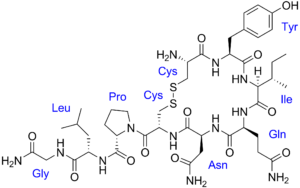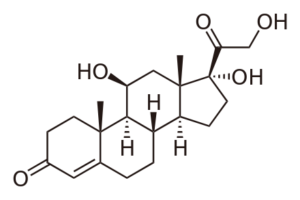Neurochemistry for leaders
By Erik Korsvik Østergaard, 12. October 2014
The four elements you should know about
There are four elements of neurochemistry, that you need to know the effect of as leader:
- Dopamine ← uhm, yummy
- Oxytocin ← uhm, yummy
- Adrenaline ← use with care
- Cortisol ← careful, avoid!
These fab four are neurotransmitters in our nervous system. They affect your brain and body, your feelings and emotions, and your patterns of reaction. You as a leader should know these four, know which to nurture and when – and which to avoid and how.
The purpose? The fab four are key elements in establishing a great working climate, and part of your happiness at work – arbejdsglæde, in Danish! That’s why it’s relevant.
You may also be interested in reading our blog series about how NOT to get stress >>
Dopamine
Dopamine, known as the “reward drug”. Dopamine makes you feel good. You produce dopamine when you are successful, obtain results, or receive something that you are (happily) addicted to, like, when you eat great food or chocolate, from sex, from a glass of wine etc.
![]() You get it from helping other people – and from getting help! When you help someone with a problem, both you and the one you’re helping will produce an amount of dopamine. It creates a good feeling and a bond; and since it’s addictive, you’ll automatically seek it again. The effect will be a little larger next time – and next time.
You get it from helping other people – and from getting help! When you help someone with a problem, both you and the one you’re helping will produce an amount of dopamine. It creates a good feeling and a bond; and since it’s addictive, you’ll automatically seek it again. The effect will be a little larger next time – and next time.
Additionally, the person(s) overlooking the two people helping each other will also produce dopamine. Not as much as the two directly involved, but still enough to notice it and have an effect.
Hence, as a leader you should seek to:
- Encourage employees to help each other, and make it visible
- Establish frequent meetings in your project or environment, where you seek and get help
- Visualize and celebrate results, even the small ones (traceable achievements and gamification).
This is one of the reasons for having kanban-standup meetings: To bring up issues in the open in order to connect people for problem solving – and to let it be visible. We seek to establish and nurture relations between the employees. That’s also why social media is a great means for culture, as it exposes help, support, achievements and acknowledgements. Results and relations are what we seek (ref. Alexander Kjerulf, the Chief Happiness Officer).
Oxytocin
Oxytocin, also known as “the love drug” or “the hug drug”. A drug you produce when you are in physical contact with others. It establishes care, comfort and trust; reduces fear and anger; creates smiles and happy energy.
The drug is easily produced by hugging. Some sources say, that you need as much as 30 seconds of hugging to release it, but you can easily manage with significantly less. Just the regular “man hug, with double-pat on the back”-hug will suffice.
![]() Naturally, not everybody should be hugged. You need to know when to shake hands, when to touch the upper arm, the shoulder, and when to hug.
Naturally, not everybody should be hugged. You need to know when to shake hands, when to touch the upper arm, the shoulder, and when to hug.
We had a strategy day with an icebreaker consisting of (amongst other things) everybody hugging their nearest coworker for 10 seconds. The amount of smiles and happy energy in the room afterwards was overwhelming and convincing, and it started a new cultural wave of relations and care. Lots of hugging and smiles occur, frequently. It’s contagious.
Hence, as a leader you should seek to:
- It IS intimidating, but try to encourage a culture where you lightly touch each other
- Know when to shake hands, touch the upper arm only, or hug
- Know when to avoid it, simply out of respect of intimate space.
Try to discreetly lay a hand on your colleague’s upper arm for just a second next time you talk.
Adrenaline
Adrenaline, also known as epinephrine, is a drug that prepares your brain and body for fight or flight. It enhances focus so we can think sharply and act quickly if we are in danger.
Adrenaline is created when we work towards a deadline, when we give an important presentation, when we have a tough feedback situation, when we are exposed or uncomfortable in any way. We want to run away and avoid, and we prepare the body for fight. It’s a powerful and hence impressive drug, that should be understood.
However, if you have adrenaline rushes too often, you loose the effect, and introduce fatigue, indifference or irritation. This kills motivation and happiness at work. It’s contagious since it spreads to your colleagues. Adrenaline is followed by production of cortisol (see below). Exhaustion is a possible ultimate consequence.
Hence, as a leader you should seek to:
- Have a balance of normal work and high performance periods – and rest afterwards
- Nurture an environment of comfort and calmness, with eagerness to kick ass when needed
- Watch for symptoms of too much adrenaline; symptoms which points towards exhaustion. Act fast, if you see the symptoms. It’s a shared responsibility between you and your colleagues.
Unboss plays a vital role here. I apply motivation theories (e.g. our Unboss’ed version of Daniel Pinks autonomy + mastery + purpose = motivation) on daily basis, in order to let the motivation come from insight and inside rather than from pressure and deadlines – hence I strive to avoid “too much, too often”-adrenaline.
I talk a lot about pressure and workload, and talk openly of fatigue and exhaustion. I strive to act fast enough, because I care. We should only prioritize the important, purposeful actions. And we should strive to celebrate our victories.
 Cortisol
Cortisol
Cortisol, known as the “long term adrenaline”, is produced to increase blood sugar in the brain and muscles, making you a temporary super human in high-pressure situations, e.g. when you have to get a kid out of a fire or save your village from raging Vikings. As a side-effect, it suppresses the immune system, digestive system and reproductive system.
It is a main cause for stress, stemming from heavy workload, unhealthy working climate, unrealistic expectations, lack of care and sympathy etc.
![]() Long term exposure to cortisol will create a change to your brains or even a brain damage. It gets exhausted, and the brain cells become irritable. Nagging or numbness is a clear symptom of this. Eventually it leads to collapse and depression.
Long term exposure to cortisol will create a change to your brains or even a brain damage. It gets exhausted, and the brain cells become irritable. Nagging or numbness is a clear symptom of this. Eventually it leads to collapse and depression.
For a thought-provoking, honest and frightening introduction, please see Line Bloch’s popular article on “Stress, work culture and brain damage” (in Danish).
Hence, as a leader you should seek to:
- Same steps as for adrenaline, see above
- Talk openly about stress and stress handling. Don’t stigmatize victims of stress.
- Act fast and consistently if stress occurs.
Several colleagues and near friends have been hit by stress. I’m by no means a stress expert or stress coach, but I think it’s caused by combination of many things – amongst other our leadership/management culture.
We as leaders should be the first to work against stress. Our culture, HR, relation building, 1:1′s, delegation/mandate practices, allocation processes etc. should all be with people and care in mind.
Know them and use them
Know the fab four, and try to incorporate them in your leadership style and practices deliberately:
- Dopamine ← uhm, yummy ← help each other, in public too
- Oxytocin ← uhm, yummy ← touch (and even hug) each other
- Adrenaline ← use with care ← balance peaks and rest periods
- Cortisol ← careful, avoid! ← have a culture that intends to eliminate stress
It creates happiness at work – arbejdsglæde! Happy employees create happy customers, who buy more.
Our newsletter is filled with articles and tools
for the modern
future-oriented leader
Want to know more?
Send me an email
and I’ll get back to you!









